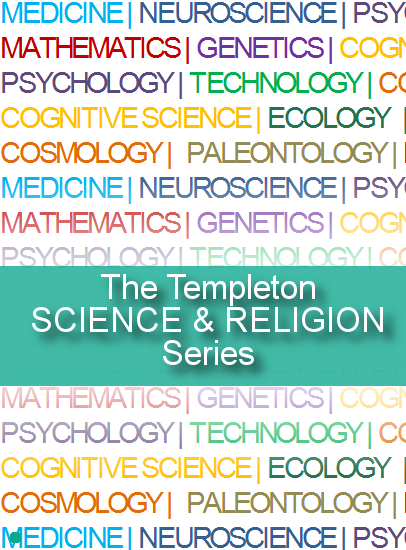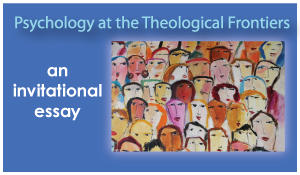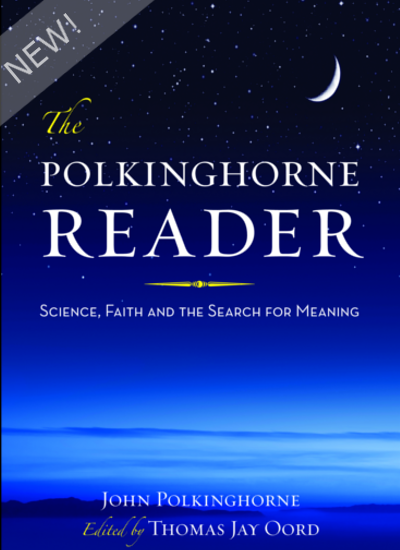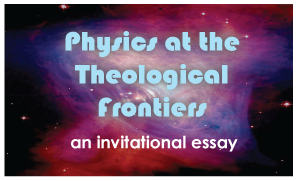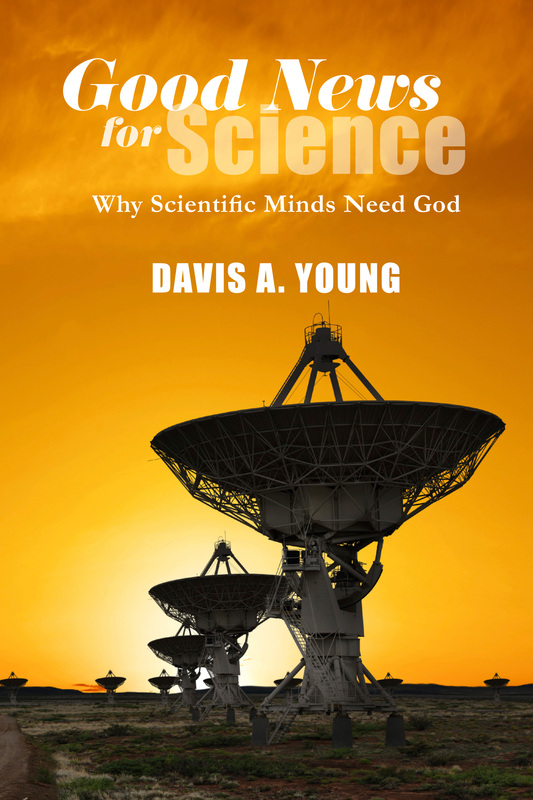God, Occam, and Science
 William of Ockham
By David Campbell
William of Ockham (c. 1285-1349) famously asserted that the simplest answer should be preferred when formulating theories. This premise is common sense, and also widely accepted as a basic principle of crafting solid scientific explanations. However, “Occam’s razor,” as the maxim is now known, also raises problems. Both some atheists and some intelligent design advocates have claimed that, by the logic of Occam’s razor, if science does not detect evidence of miraculous action, then God is an unnecessary complication for scientific explanations. But is that in fact how Occam's razor works in science? Albert Einstein's description of the principle of simplicity in science is a good summary: “The grand aim of all science is to cover the greatest number of empirical facts by logical deduction from the smallest number of hypotheses or axioms.” This is not all that science does—it also makes observations and tests existing "axioms." But Einstein’s statement does summarize well the way in which science tries to make things "simple." Or rather, the ways in which science tries to make things simple, for there are two separate ways in which science is "simplified": having fewer, more comprehensive explanations (i.e., reducing the number of explanations), and having those explanations individually be as simple as possible. A little familiarity with mathematical functions may alert you to a problem here. Trying to simultaneously maximize or minimize two functions is often difficult, because their individual extremes may not coincide. Likewise, making an explanation too simple may keep it from explaining as many things as it could. For example, Newton's law of gravity is fairly simple: F=g*M*m/r2. It works quite well under ordinary conditions, but more extreme conditions reveal that it doesn't work as well as the more complicated theory of general relativity. On the other hand, if you toss a ball under ordinary conditions and carefully measure its trajectory, those measurements will likely not exactly equal the predictions of Newton's law of gravity. Friction with the air, wind, spin, measurement errors, etc. will produce slight variations in your results. To account for the difference, you could craft a very complex formula that exactly represents all your results. Alternatively, you could make a separate simple law for every throw. Or, even simpler, you could just compile a big table of results from all your throws and eliminate the laws altogether. But there’s a general scientific agreement that Newton's law, plus minor disruptions and error, is a better, simpler explanation for the trajectory of a ball than either trying to exactly replicate your measurements with one complex formula or making up a new simple formula every time. This tension introduces an element of subjectivity. What is the right balance between fewer laws and simpler laws? And what really counts as “simple,” anyway? The average beginning student thinks that the math behind much of modern physics is far from simple, yet to someone who understands the formulas, they may seem beautifully simple. Finding the right balance depends in part on your particular question. One of the grand goals of physics is a "theory of everything"—a theory that combines the four fundamental forces of nature (electromagnetic, weak atomic force, strong atomic force, and gravity). Some people claim that such a theory would earn the final Nobel Prize in physics. This is untrue—not only are there many topics of physics besides forces (such as particles), but there would also be plenty of opportunities for further prizes in testing and applying the theory. Yet why pursue such a theory when we already have good formulas for each of the four individually? Having a single law for all forces would be simpler, in one way. And it would provide insight into more extreme conditions beyond the reach of current models. At the same time, in practice, most physicists would likely continue to use the existing formulas that describe the individual forces quite well. Deriving the formula needed for a particular practical application of physics, such as many engineering questions, from the "theory of everything" may be mathematically impractical; at best, it would probably take rather longer than looking up a much more specific formula that applies directly to the problem at hand. No matter how beautifully simple a theory may be, if it doesn't work, it's no good.
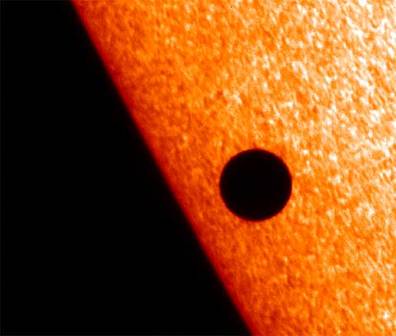 Mercury transiting the sun, captured by NASA's solar optical telescope
Another challenge in deciding when a model is good enough is identifying the difference between valid data and noise or error. Actual measurements will almost never provide a perfect match for a formula, because too many factors can affect it. For example, the very first measurement of the speed of light, over 300 years ago, was much slower than the currently accepted value. As soon as this first measurement was published, other scientists made their own calculations and got values ranging from faster, to almost right on, to even slower than the original. Over the next few centuries, better measurements of the speed of light converged on a constant experimental value. This pattern of multiple sets of data over time converging on a central value is what we would expect if the value were always constant, but measurement techniques were only gradually improving in accuracy. In the above case, the deviations were eventually attributed to human error, not to a rapid or irregular up-and-down fluctuation in the speed of light. Therefore, a handful of anomalous data points are not enough to formulate or overturn a theory—there must be consistent, well-supported results to be persuasive.
In contrast, Mercury's orbit differs in detail enough from the predictions of Newton's law of gravity that people were looking for an explanation for the disparity in their measurements. One hypothesis assumed that there was some other celestial object (or objects), such as a planet, influencing Mercury’s orbit. By imagining various configurations and masses of such objects, any number of orbits could result, including a match to Mercury's measured path. However, no sizeable objects were found in the inner solar system that could provide the extra gravitational influence. Ultimately, a substantial change in the formula for gravity was needed, and Einstein provided just that with a theory that not only accounted for ordinary conditions matching Newton's laws, but predicted exactly the observed orbit for Mercury (and several other things not explained by Newtonian physics). Today, Einstein's theory is accepted as correct and Newton's law is considered merely an approximation of Einstein's theory, useful only under certain conditions. The Mercury scenario illustrates yet another limit on the desirability of simplicity: No matter how beautifully simple a theory may be, if it doesn't work, it's no good. For example, a widely used model for the deposition of marine sediments in the mid to upper Pliocene of the southeastern U.S. includes a single interval of deposition of muddier sediment, followed by sandier sediment. Very simple, but study of fossils, stable isotopes, and the exact layers in different localities supports a much more complex model of sea level rise and fall, in agreement with patterns seen in other parts of the world. Science is fundamentally a study of the physical world. Philosophical, theological, or scientific ideas may prompt scientists to expect particular patterns in the physical world and to look for them, but if they fail to find the results they expect, they must be honest and say that things don't match up. Perhaps the test was flawed; perhaps the deduction was flawed; perhaps the original idea was flawed. Further observations or experiments, along with further analysis, will help identify where the root of the discrepancy lies. Similarly, Christian theology must be firmly empirical, not based on speculation. In Christian spiritual matters, our primary evidence is scripture. Outside observations may be of some use, but are potentially misleading without going back to the primary source. For example, the Trinity is often criticized as too complicated, confusing, and mysterious an idea. But reality is often complicated, confusing, and mysterious, and too much simplicity can be a mark of fiction. Unitarian models, including Judaism, Arianism, Islam, etc., and polytheistic ones, such as dualism, Mormonism, or paganism, are simpler in their concept of the divine than is Trinitarian theology, but these doctrines don't match the teachings of the New Testament. Likewise, a nice, grandfatherly, non-coercive god who acts just the way we think he should is a simpler concept than what is portrayed in the Bible. But these simpler versions of divine reality sound suspiciously more like the sort of systems that people would make up than does a curious system with simultaneous aspects of three and one. Quantum mechanics includes a similarly counterintuitive and complicating wave-particle duality, but it is perhaps the most precisely confirmed of any law of physics. In light of all these caveats and complications, what does Occam's razor imply for God and science? God provides a comprehensive explanation, a “genuine theory of everything,” where all aspects of existence are accounted for. As such, not seeing immediate need to invoke God within a particular scientific investigation does not rule God out as superfluous, just as a basic formula for the voltage of a circuit does not eliminate the usefulness of the general laws of electromagnetic theory. As discussed, when dealing solely with the smaller problem, the more comprehensive explanation may not be very useful. Our knowledge of theological principles does not help us solve for scientific theories—E=mc^2, for example—but we can infer from our knowledge of God that the universe, being God’s creation, ought to behave in orderly ways, and as God’s rulers over creation, we’ve been endowed with the ability to figure out how creation works. Regardless of how we try to boil things down into a unifying theory, the quest for simple explanations in science doesn't exclude God—it's not even a close shave. |



